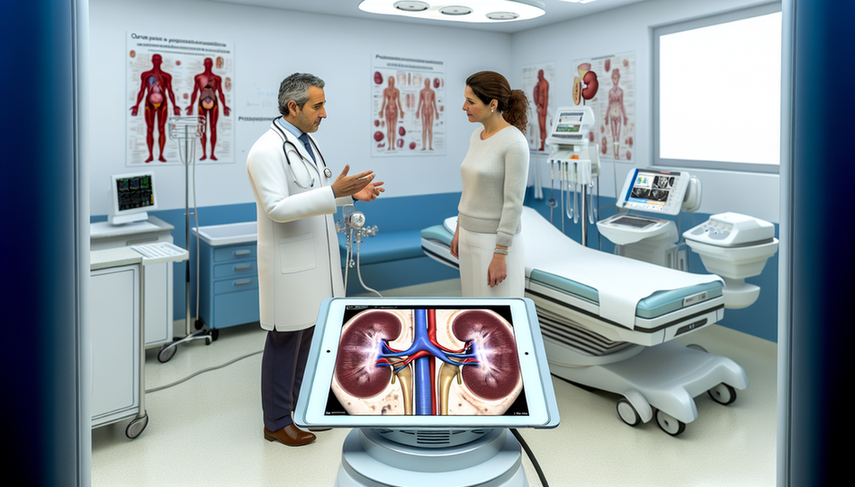Renal Stone Treatment: Extracorporeal Lithotripsy, Ureteroscopy, and Urinary pH Control for Recurrence Prevention

Dear colleagues, renal stone disease is a prevalent condition affecting a significant percentage of the global population. The management of this pathology has evolved significantly, incorporating advanced techniques such as extracorporeal lithotripsy and ureteroscopy, as well as strategies for urinary pH control to aid in recurrence prevention. In this article, we will explore current treatment options and their efficacy, based on recent literature.
Diving Deeper into Renal Stone Treatment
Extracorporeal shock wave lithotripsy (ESWL) combined with percutaneous nephrolithotomy (PCNL) has proven to be a safe and effective option for treating complex renal stones. This combined approach enhances stone clearance rates without increasing complication rates, making it a viable option for patients with complex renal lithiasis.
On the other hand, flexible ureteroscopy (fURS) is essential in the laser treatment of renal stones. However, the presence of residual fragments post-procedure remains a challenge. Recent studies are evaluating the impact of forced diuresis with furosemide to improve fragment clearance rates, which could significantly reduce recurrences.
Moreover, metabolic control is crucial in preventing new stone formations. Therapy with potassium citrate has shown efficacy in reducing stone formation in patients with medullary sponge kidney, even in the absence of distal renal tubular acidosis. This treatment not only decreases stone formation but also reduces the need for endourological procedures and the incidence of urinary tract infections.
Conclusions
The management of renal stones has advanced significantly with the integration of techniques such as extracorporeal lithotripsy and ureteroscopy, alongside a focus on metabolic control for recurrence prevention. The combination of ESWL and PCNL offers a high stone clearance rate, while fURS, complemented by forced diuresis, could further improve outcomes. Finally, the use of potassium citrate is an effective strategy for urinary pH control and the prevention of new stone formations. These advancements not only enhance our patients' quality of life but also optimize long-term clinical outcomes.
Referencias
- [1] Analysis of the safety and efficacy of combined extracorporeal shock wave lithotripsy and percutaneous nephrolithotomy for the treatment of complex renal calculus.
- [2] FIRE Stones: impact of forced diuresis on the residual fragment rate after flexible ureteroscopy for destruction of kidney stones with laser.
- [3] The impact of potassium citrate therapy in the natural course of Medullary Sponge Kidney with associated nephrolithiasis.
Created 5/1/2025
